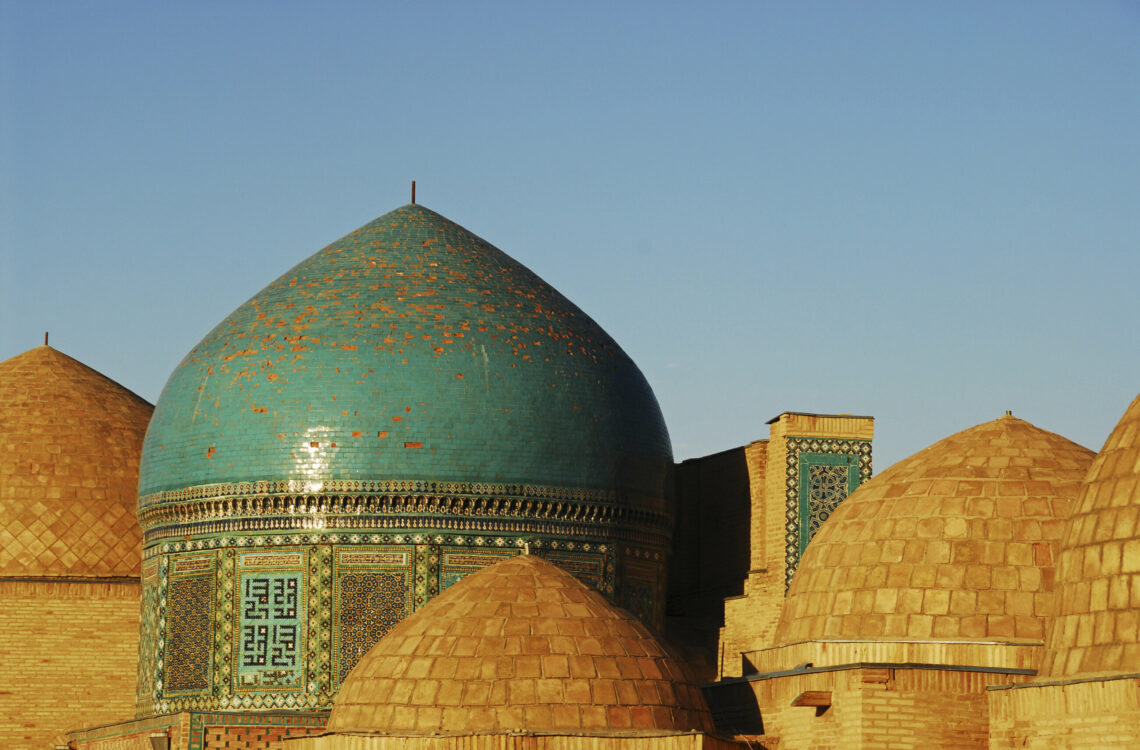Biden lacks strategy for Central Asia
With Moscow, Beijing and Ankara jockeying for influence in Central Asia, the Biden administration could be tempted to compete alongside them. But with American soft power at its nadir, Washington will have a hard time proving that it still has something to offer.

In a nutshell
- U.S. influence in Central Asia has dwindled away
- Russia, China and Turkey have made progress in the region
- Washington and the Biden administration will struggle to catch up
Even since he was sworn in as the 46th president of the United States, Joe Biden has been repeating that “America is back.” During his speech at the Munich Security Conference in February, he repeated it three times, and it featured prominently in his address to a joint session of the Congress at the end of April.
The Biden administration is likely attempting to distance itself from the Trump years – a time when America did little to nurture its relations with traditional allies and cozied up to assorted authoritarians across the globe. So far, President Biden has referred to Russian President Vladimir Putin as a “killer,” issued warnings to Iran and North Korea about their nuclear ambitions, and let China know that there is a new sheriff in town. He has also won the favor of climate change activists with his environmental policies.
Strategic challenges
The critical question looking forward is not whether President Biden wishes America to be back, which appears to be the case given the above measures. But rather, what is there to come back to? Even formerly close allies in Europe sound wary. French President Emmanuel Macron still insists on European “strategic autonomy,” and German Chancellor Angela Merkel admits that some aspects of U.S.-Europe remain “complicated.”
Beyond the need to repair old relations, the main challenge that awaits the Biden administration is whether it has what it takes to engage with those it sees as foes. Former Secretary of State Mike Pompeo said: “I don’t think the American people can afford to go back to eight more years of Barack Obama’s foreign policy.”
Beyond the apparent spite, the former U.S. diplomacy head touched on a raw nerve, suggesting that the core of the challenge is not to undo what took place during the Trump presidency. Instead, it will be to overcome the legacy of the Obama administration – eight years of incoherent morals-driven foreign policy stratagems that resulted in one mess after another, from Russia and Ukraine to Libya and Syria. From that angle, the task appears formidable.
Waning U.S. relevance
The South Caucasus is an obvious example of how distant the U.S. has grown from serious interest-driven geopolitics. During his time as vice president under President Obama, Mr. Biden developed an intimate knowledge of the region and established extensive personal networks. The U.S. played an active role in the Minsk Group that was tasked with finding a negotiated settlement to the “frozen conflict” in Nagorno-Karabakh.
The effective outcome of the Karabakh war is that the region is once again defined by rivalry between Turkey and Russia, and the U.S. is no longer a player.
In November last year, Turkish President Recep Tayyip Erdogan simply drove a tank over it all. His military and political support allowed Azerbaijan to score a decisive victory over Armenia, which was rescued from a total rout only by eleventh-hour Russian mediation. The effective outcome of the Karabakh war is that the region is once again defined by rivalry between Turkey and Russia, and the U.S. is no longer a player.
Soft power competition
The waning of American relevance in the South Caucasus may be viewed as the harbinger of a new order in Central Asia. The pending withdrawal of all U.S. troops from Afghanistan will profoundly influence the ongoing “great game” for influence in the region. While the war against the Taliban was still being prosecuted, both Russia and China were happy to accept American military presence in the area. Now Washington and the Biden administration will have to come up with a new reason for being present in Central Asia.
Russia and China have come to a modus vivendi that leaves regional security to the former and economic development to the latter. The U.S. and the European Union are left with the noble cause of promoting democracy and human rights. It is questionable how much regional demand there is for such a presence.

With Russia and China managing hard security and trade and investment flows, the remaining battle will be over soft power. In this game, Russia has a head start, with a colonial legacy that ranges from language and culture to education and business networks. This heritage has been challenged by China, which has erected countless Confucius Institutes that foster Chinese language instruction and extoll the superiority of Chinese culture. Amid mounting concern about Beijing’s “Sinicization” of Central Asia, Moscow has also found added reason to be concerned about Turkey, whose calls for pan-Turkism could appeal to the Turkic-speaking states in the region.
Strategy for Central Asia
It is in this arena that the U.S. will now venture. It will do so primarily with a human rights agenda that challenges Beijing’s oppression of the Muslim Uighur population in Xinjiang. While this will play well in Western media, it is again doubtful how well it will resonate in the region. There is widespread Sinophobia, but it is scattered rather than organized, and the establishment mood is pro-China.
When Secretary of State Mike Pompeo made a tour of the region in February 2020, his ambition to play on anti-Chinese sentiment was condemned by Moscow and Beijing. Raising the profile of the U.S. amongst regional leaders will be a tough sell. Washington could exploit the fact that Beijing’s debt-trap diplomacy has left countries in serious financial difficulty. President Biden could offer to extend credit that would allow those countries in Central Asia to pay off China and instead become indebted to the U.S. This would undermine Beijing’s clout. But the American public could disapprove of funding authoritarian regimes.
Soft power projections work only when coupled with a credible threat of hard power or with tangible prospects of material gain. Measured against the hard power of the Sino-Russian “axis of convenience,” the U.S. could become largely irrelevant as a military player in a post-Afghan war era.
Scenarios
While engaging with Central Asia, the track record of American involvement will be a clear liability. Following its harsh condemnation of the Karimov regime in Uzbekistan for its bloody crackdown against anti-regime protests in Andijan in 2005, the U.S. was asked to vacate its military base at Karshi-Khanabad. Having lost a strategic foothold in the region, rebuilding relations will require balancing realpolitik against moral imperatives.
The present strategy for Central Asia is a C5+1 dialogue format that was formulated by the Obama administration. It was inherited by the Trump administration and looks set to define the Biden-Harris administration as well. It revolves around the “holy trinity” of independence, sovereignty, and territorial integrity. The more specific goal of the USAID Regional Development Cooperation Strategy for 2020-2025 is “A Self-Reliant Central Asia that is Interconnected, Independent, and Resistant to Malign Influences.”
Something may come from facilitating cooperation between Afghanistan and neighboring Central Asian states. In May 2020, the Trump administration launched an initiative to bolster relations between Afghanistan and Uzbekistan, which is keen on major transport infrastructure development toward the south. In March this year, the Biden-Harris administration launched a second “trilateral dialogue,” which supports relations between Afghanistan and Tajikistan.
These initiatives are meant as a strong signal that Washington is not about to abandon either Afghanistan or Central Asia. But overall, the U.S. no longer has the military or economic power to enforce any agenda Biden might have in Central Asia. Values have become a tangible geopolitical currency, in part due to Washington’s efforts. The paradox is that when American values are pitted against those of China, Russia and Turkey, the odds are not in favor of the U.S. The most likely scenario is that the Biden administration will not make much headway in Central Asia in the years to come.







